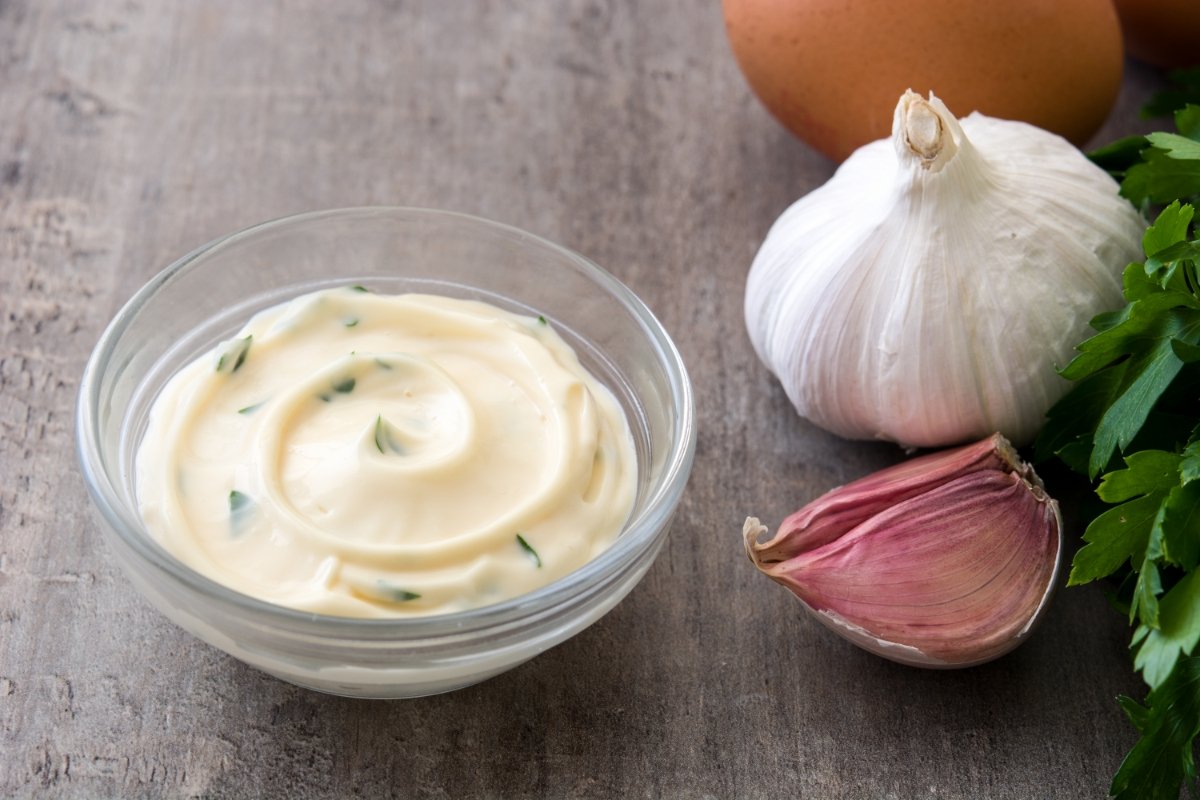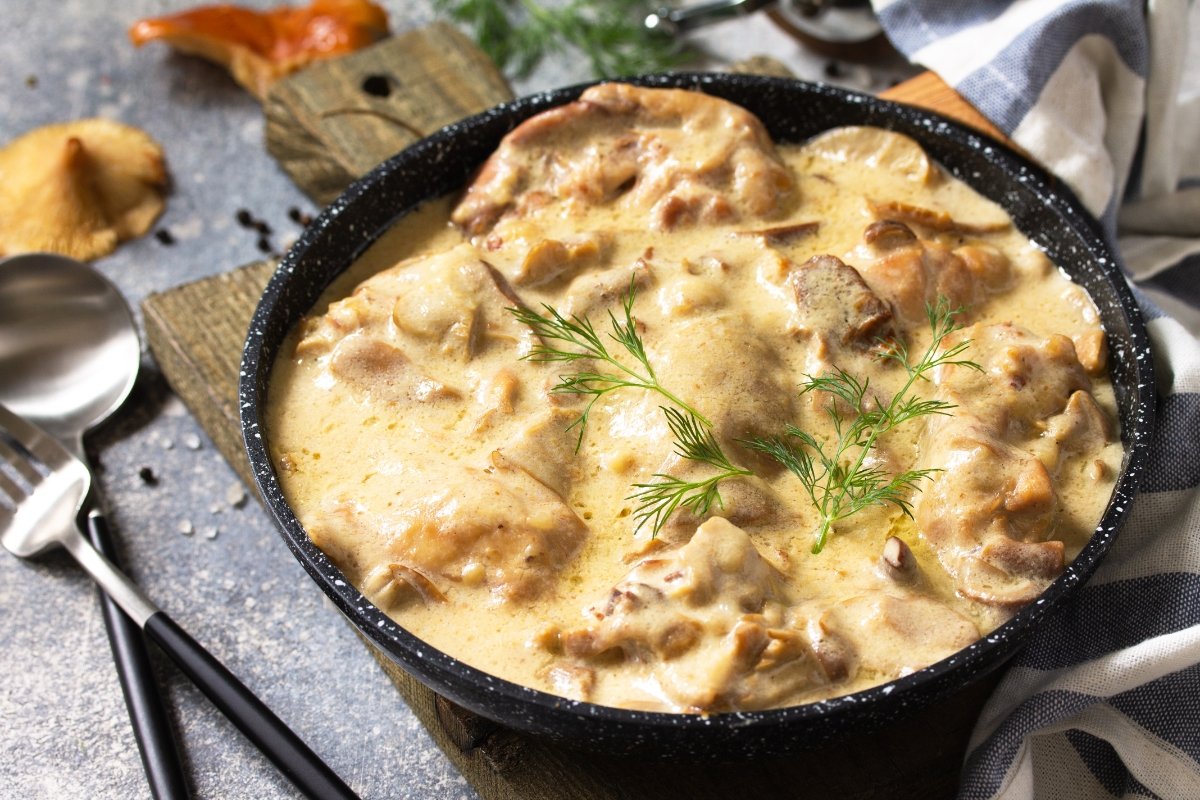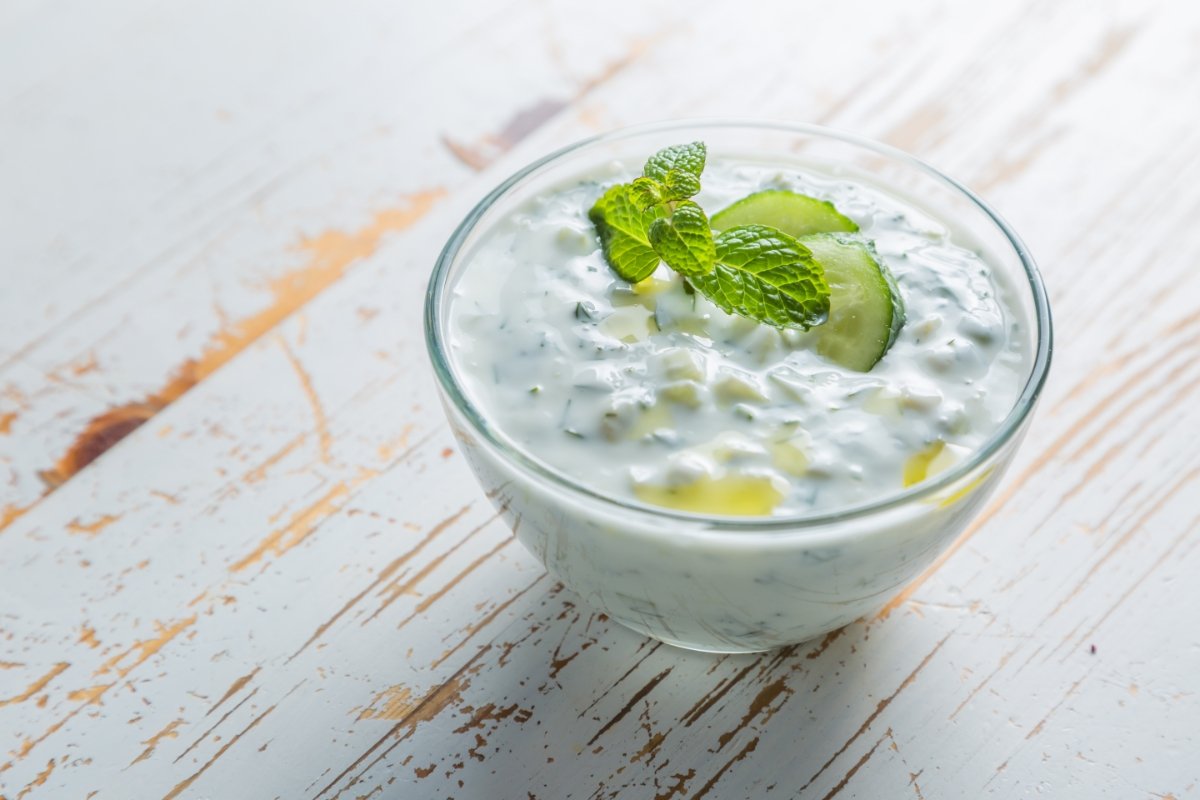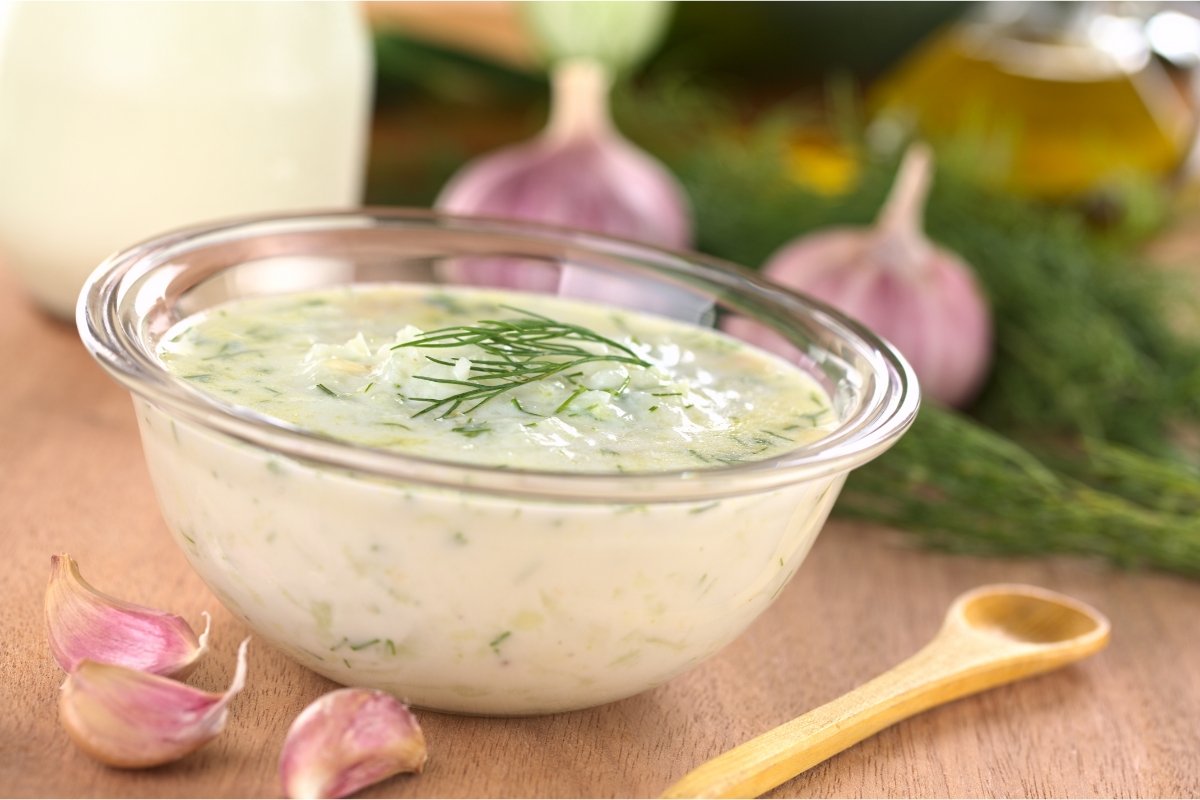Introduction
Garlic parmesan sauce, a sublime blend of rich Parmesan cheese, aromatic garlic, creamy butter, and often a touch of cream, stands as a testament to the magic that can happen when simple ingredients are brought together with care and intention. Its roots are deeply embedded in Italian cuisine, a culinary tradition known for its emphasis on quality ingredients and bold flavors. However, this sauce has transcended its origins to become a beloved addition to kitchens and dining tables worldwide.
The allure of garlic parmesan sauce lies not just in its delicious flavor but also in its versatility. It can transform an ordinary plate of pasta into a gourmet experience, elevate a simple grilled chicken breast to new heights, and even make a side of vegetables something to look forward to. The sauce’s popularity is also due to its simplicity; with just a few ingredients, anyone can create a condiment that rivals those found in high-end restaurants.
Throughout this blog post, we will explore the rich history and cultural significance of garlic parmesan sauce, dive into the basics of its preparation, and offer a step-by-step guide to making your own. We’ll also provide tips for customizing the sauce to suit your dietary needs and preferences, suggest dishes that perfectly complement its flavors, and share advice on storing and preserving your homemade sauce. Whether you’re a seasoned cook or just beginning to explore the culinary world, garlic parmesan sauce is a delicious addition to your repertoire, promising to bring a touch of gourmet to your everyday meals.
The Basics of Garlic Parmesan Sauce

Garlic Parmesan sauce is a delectable blend of flavors that marries the sharpness of Parmesan cheese with the aromatic punch of garlic, all mellowed and melded together with the creamy richness of butter and sometimes cream. This section will break down the key ingredients and discuss the variations in preparation methods that can influence the sauce’s final taste and texture, showcasing the adaptability of this sauce to different cuisines and preferences.
Key Ingredients
- Garlic: The heart of the sauce, garlic adds a pungent, aromatic quality that infuses the entire dish with flavor. Fresh garlic is preferred for its potency and depth of flavor.
- Parmesan Cheese: Aged Parmesan cheese lends a salty, nutty flavor that is unmistakably central to the sauce’s character. The quality of the Parmesan can significantly affect the sauce’s taste, with freshly grated Parmesan offering the best flavor.
- Butter: Unsalted butter forms the base of the sauce, adding richness and helping to carry the flavors of the garlic and Parmesan. It also contributes to the sauce’s silky texture.
- Cream: While not used in all versions, heavy cream or half-and-half can be added for a creamier, more luxurious sauce. It softens the sharpness of the garlic and Parmesan, resulting in a smoother flavor profile.
- Seasonings: Salt and pepper are essential for balancing and enhancing the flavors. Additional spices and herbs, such as parsley, red pepper flakes, or Italian seasoning, can be included to add complexity.
Variations in Preparation
The beauty of garlic Parmesan sauce lies in its versatility. Though the core ingredients remain relatively constant, slight variations in preparation methods can yield different flavors and textures, making the sauce adaptable to a wide range of dishes.
- Roux-Based vs. Reduction: Some recipes start with a roux (a mixture of butter and flour) to thicken the sauce, while others rely on a reduction of cream. The choice affects the sauce’s texture and richness.
- Cheese Varieties: While Parmesan is the star, incorporating other cheeses like Romano or Asiago can introduce new flavor dimensions.
- Cream Alternatives: For a lighter version, milk or a plant-based alternative can replace cream, adjusting the sauce to dietary preferences or health considerations.
- Garlic Preparation: The preparation of garlic (minced, sliced, or roasted) can alter the intensity of its flavor in the sauce. Roasted garlic offers a milder, sweeter taste compared to the sharpness of raw, minced garlic.
How to Make Garlic Parmesan Sauce
Creating the perfect garlic Parmesan sauce is an art that balances the robust flavors of garlic and Parmesan with the rich, creamy base. This section will guide you through a step-by-step recipe to craft a classic garlic Parmesan sauce, accompanied by professional tips to ensure your sauce is flawless in both taste and texture.
Classic Garlic Parmesan Sauce Recipe
Ingredients:
- 4 cloves of fresh garlic, minced
- 1/2 cup (1 stick) of unsalted butter
- 1 cup of heavy cream (substitute with half-and-half for a lighter version)
- 1 1/2 cups of freshly grated Parmesan cheese
- Salt and freshly ground black pepper to taste
- Optional: 1/2 teaspoon of red pepper flakes or Italian seasoning for added flavor
Instructions:
- Prepare the Garlic: Begin by mincing the garlic cloves finely. This releases their aromatic oils, ensuring the sauce is infused with a deep garlic flavor.
- Melt the Butter: In a medium saucepan over medium heat, melt the unsalted butter. Be careful not to let it brown, as this can affect the sauce’s final taste.
- Sauté the Garlic: Add the minced garlic to the melted butter, sautéing for about 1-2 minutes until fragrant but not browned. This step is crucial for developing the sauce’s foundational garlic flavor.
- Add Cream: Slowly pour in the heavy cream, stirring constantly to combine it smoothly with the butter and garlic. Allow the mixture to come to a gentle simmer, which will thicken the sauce slightly.
- Incorporate Parmesan: Reduce the heat to low and gradually add the grated Parmesan cheese, stirring continuously until the cheese has fully melted and the sauce is smooth. Avoid high heat at this stage to prevent the sauce from becoming grainy.
- Season: Taste the sauce and season with salt and freshly ground black pepper. Add red pepper flakes or Italian seasoning if desired, adjusting according to your taste preferences.
- Serve: Once the sauce has thickened to your liking, remove it from the heat. It’s now ready to be served over your favorite pasta, vegetables, or protein.
Tips for the Perfect Sauce

- Fresh Ingredients: The quality of your ingredients can make a significant difference. Use freshly grated Parmesan and fresh garlic for the best flavor.
- Constant Stirring: Keep stirring the sauce as you add ingredients to prevent it from sticking to the bottom of the pan and to ensure a smooth texture.
- Adjust Consistency: If the sauce is too thick, you can thin it with a little more cream or milk. If it’s too thin, let it simmer a bit longer to reduce and thicken.
- Flavor Balance: The key to a great garlic Parmesan sauce is the balance of flavors. Don’t be afraid to adjust the garlic, cheese, and seasoning levels to suit your taste.
This classic garlic Parmesan sauce recipe and the accompanying tips provide a solid foundation for creating a delicious condiment that can enhance a wide variety of dishes. However, the true beauty of this sauce lies in its versatility and the ability to customize it to your personal preferences and dietary needs.
This foundational understanding of garlic Parmesan sauce’s key components and the flexibility in its preparation sets the stage for exploring how to craft your own version of this classic condiment. Next, we will delve into a step-by-step guide to creating a classic garlic Parmesan sauce, complete with tips for ensuring the perfect balance of flavors and consistency.
Customizing Your Garlic Parmesan Sauce
The versatility of garlic Parmesan sauce lies not just in its ability to complement a variety of dishes, but also in the ease with which it can be customized to suit different tastes and dietary requirements. From vegan adaptations to flavor enhancements, this section provides ideas to help you personalize your sauce.
Making It Vegan
For those following a vegan diet or looking to reduce dairy intake, creating a vegan version of garlic Parmesan sauce is simpler than you might think. Substitute the butter with a plant-based alternative, such as olive oil or vegan butter. Replace the heavy cream with a non-dairy milk (cashew or almond milk works well for creaminess), and use nutritional yeast or a vegan Parmesan cheese substitute for the cheesy flavor. These swaps allow you to enjoy the rich, savory taste of garlic Parmesan sauce without any animal products.
Gluten-Free Adaptations
While the classic garlic Parmesan sauce recipe is naturally gluten-free, ensuring that all ingredients, especially any cheese substitutes or additional flavorings, are gluten-free is crucial for those with sensitivities. Always check labels to confirm that your ingredients are safe for your dietary needs.
Adding Depth and Complexity
- Roasted Garlic: For a sweeter, more mellow garlic flavor, try roasting the garlic before adding it to the sauce. This can add a new layer of depth to the sauce’s flavor profile.
- Herbs and Spices: Incorporating fresh or dried herbs such as basil, oregano, or thyme can introduce aromatic notes to the sauce. A pinch of nutmeg or paprika can also add warmth and complexity.
- Cheese Varieties: Experiment with adding a small amount of another cheese, such as Gorgonzola, for a sharper taste, or Mascarpone, for extra creaminess. This can elevate the sauce to new culinary heights.
- Wine or Stock: A splash of white wine or vegetable stock can introduce an acidity that balances the sauce’s richness, enhancing its overall flavor.
Dietary Considerations
When customizing your garlic Parmesan sauce, consider the dietary needs and preferences of those who will be enjoying it. Whether you’re accommodating a vegan diet, gluten intolerance, or simply personal taste preferences, small adjustments can make a big difference in ensuring everyone can savor the sauce.
This flexibility not only makes garlic Parmesan sauce a versatile addition to your culinary repertoire but also ensures that it can be enjoyed by a wider audience, regardless of dietary restrictions.
Pairing with Dishes

Garlic Parmesan sauce, with its creamy texture and rich flavors, can transform simple ingredients into extraordinary meals. This section offers recommendations for dishes that pair exceptionally well with this versatile sauce, as well as creative ways to incorporate it into your culinary creations.
Ideal Pairings
- Pasta: Perhaps the most classic pairing, garlic Parmesan sauce is a natural complement to pasta. From fettuccine to penne, the sauce clings to each noodle, providing a creamy coating that enhances the pasta’s flavor.
- Pizza: Use garlic Parmesan sauce as a base for white pizzas, offering a creamy alternative to traditional tomato sauce. Top with vegetables, chicken, or even more cheese for a decadent treat.
- Vegetables: Drizzle the sauce over steamed or roasted vegetables like broccoli, cauliflower, or asparagus to add a layer of richness and flavor that makes eating your greens a pleasure.
- Seafood: The sauce pairs beautifully with seafood, especially shrimp and scallops, adding a luxurious dimension to these delicate proteins.
- Chicken: Whether it’s grilled, baked, or fried, chicken and garlic Parmesan sauce are a match made in heaven. Use the sauce as a marinade, topping, or dipping sauce to elevate the dish.
Creative Incorporations
- Dip: Serve garlic Parmesan sauce as a dip for breadsticks, garlic bread, or even crispy chicken wings for a crowd-pleasing appetizer.
- Stuffed Meats: Enhance stuffed chicken breasts or pork chops by incorporating the sauce into the filling or using it as a decadent topping.
- Baked Goods: Infuse savory baked goods, such as scones or biscuits, with garlic Parmesan sauce for a flavorful twist on traditional recipes.
- Risotto: Stir the sauce into a creamy risotto for an extra layer of flavor and richness, making each bite more indulgent than the last.
The key to successfully pairing garlic Parmesan sauce with dishes is to consider the balance of flavors. The sauce’s richness works well with ingredients that can either complement its depth or provide a contrasting texture or flavor profile. Experimenting with different pairings will unlock new culinary possibilities, allowing the sauce to shine in various contexts.
Storage and Preservation
Properly storing and preserving garlic Parmesan sauce can extend its shelf life, allowing you to enjoy its rich flavors even after the initial meal. This section covers the best practices for keeping your sauce fresh, how to freeze it for long-term storage, and tips for reheating without compromising its creamy texture and taste.
Refrigerating Garlic Parmesan Sauce
- Cooling Down: Allow the sauce to cool to room temperature before storing it to prevent condensation inside the container, which could affect its texture.
- Airtight Containers: Transfer the sauce to an airtight container or a jar with a tight-fitting lid. This helps to keep out contaminants and preserve the sauce’s flavor.
- Shelf Life: Properly stored in the refrigerator, garlic Parmesan sauce can last up to 5 days. Always check for signs of spoilage, such as an off smell or mold, before use.
Freezing Garlic Parmesan Sauce
- Preparation for Freezing: If you plan to freeze the sauce, consider portioning it into smaller containers or ice cube trays. This allows you to thaw exactly the amount you need without defrosting the entire batch.
- Freezer-safe Containers: Use freezer bags or containers specifically designed for freezer storage to protect the sauce from freezer burn and flavor transfer.
- Thawing: When ready to use, thaw the sauce overnight in the refrigerator. Avoid microwaving directly from the freezer, as this can cause the sauce to separate.
Reheating
- Gentle Reheat: To reheat, transfer the sauce to a saucepan and warm it over low heat, stirring frequently to prevent the sauce from separating or scorching. Adding a small amount of milk or cream can help restore its creamy consistency.
- Avoid Boiling: Never reheat the sauce on high heat or bring it to a boil, as this can cause the fats and liquids to separate, resulting in a grainy texture.

